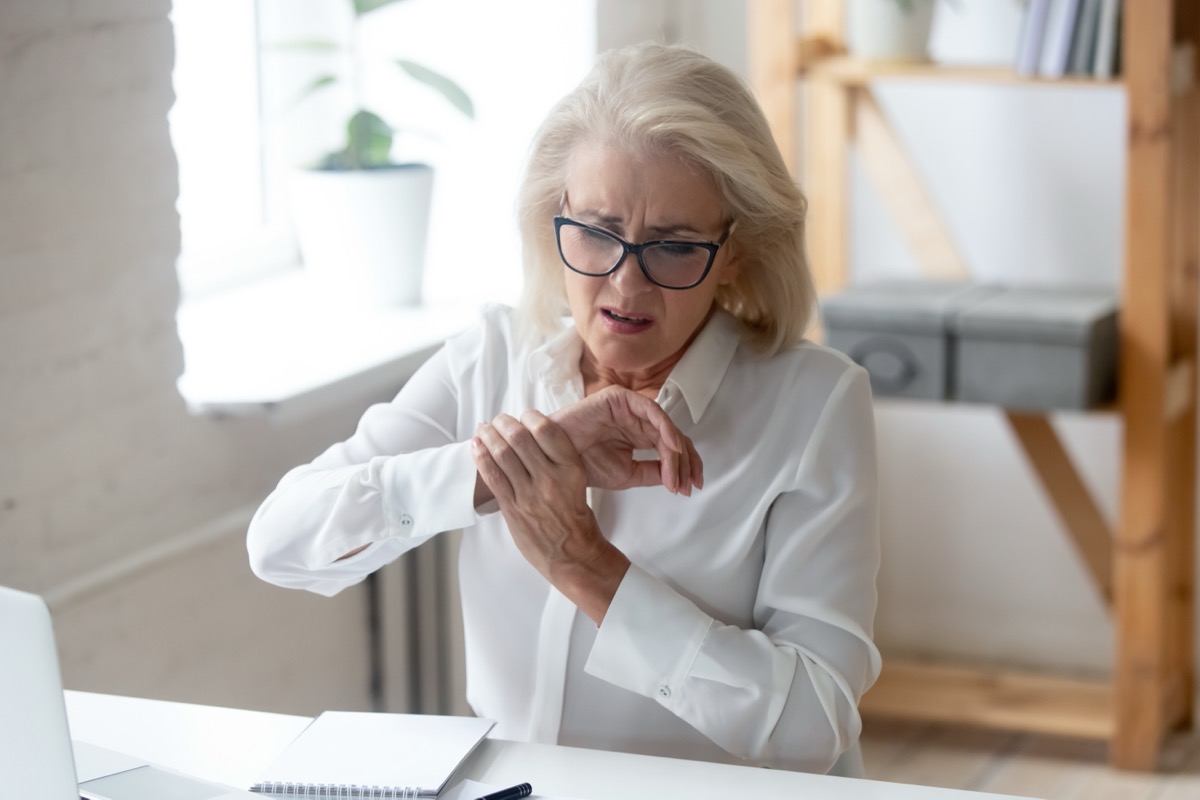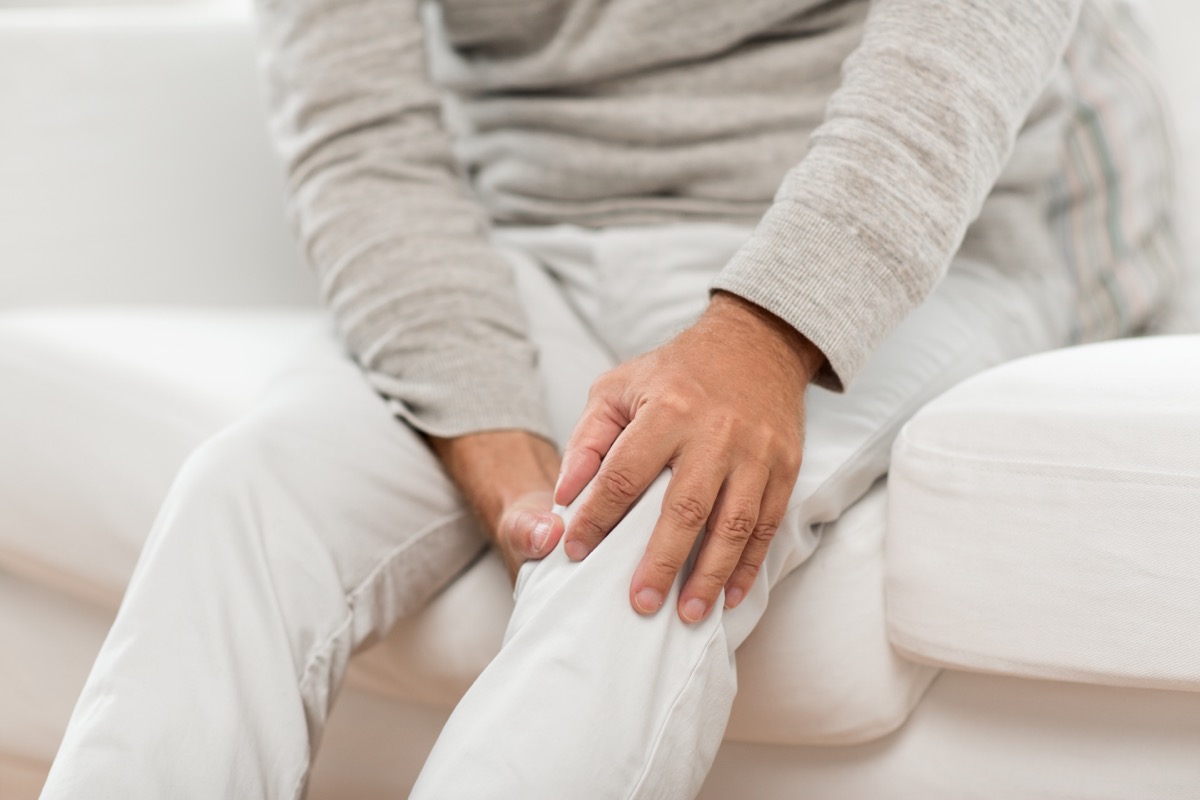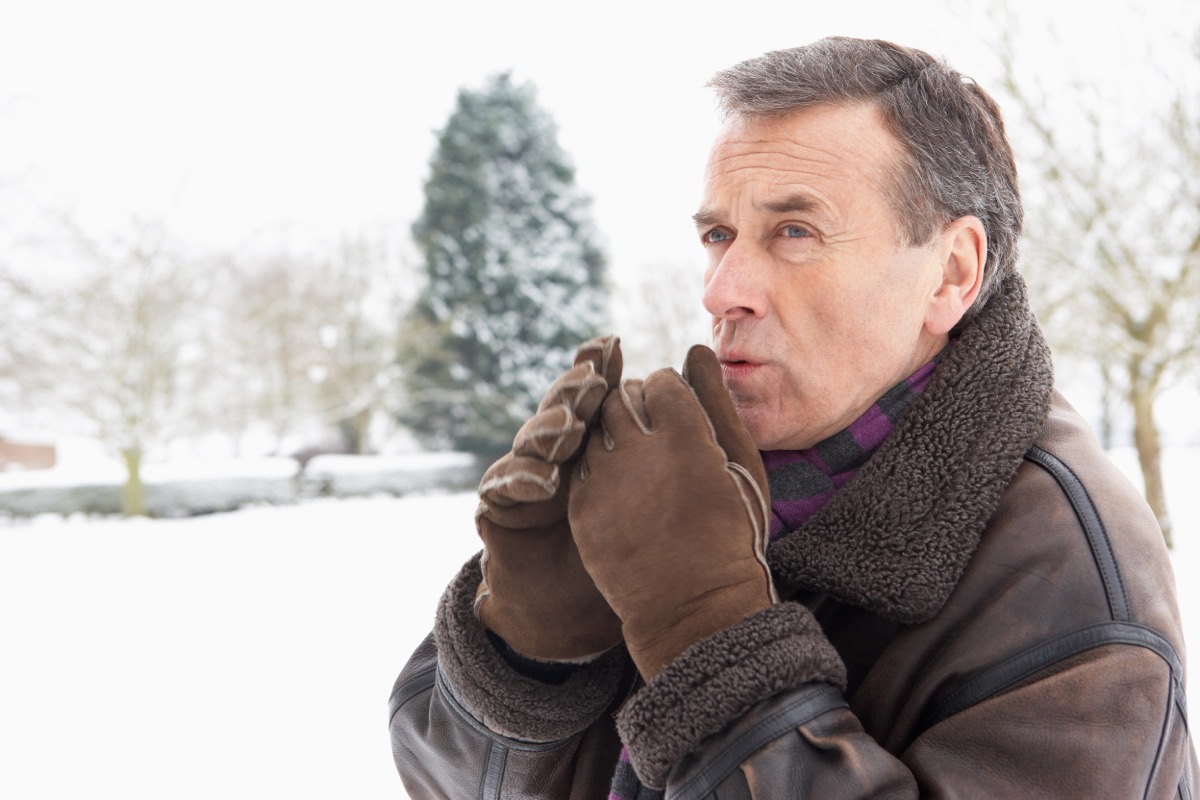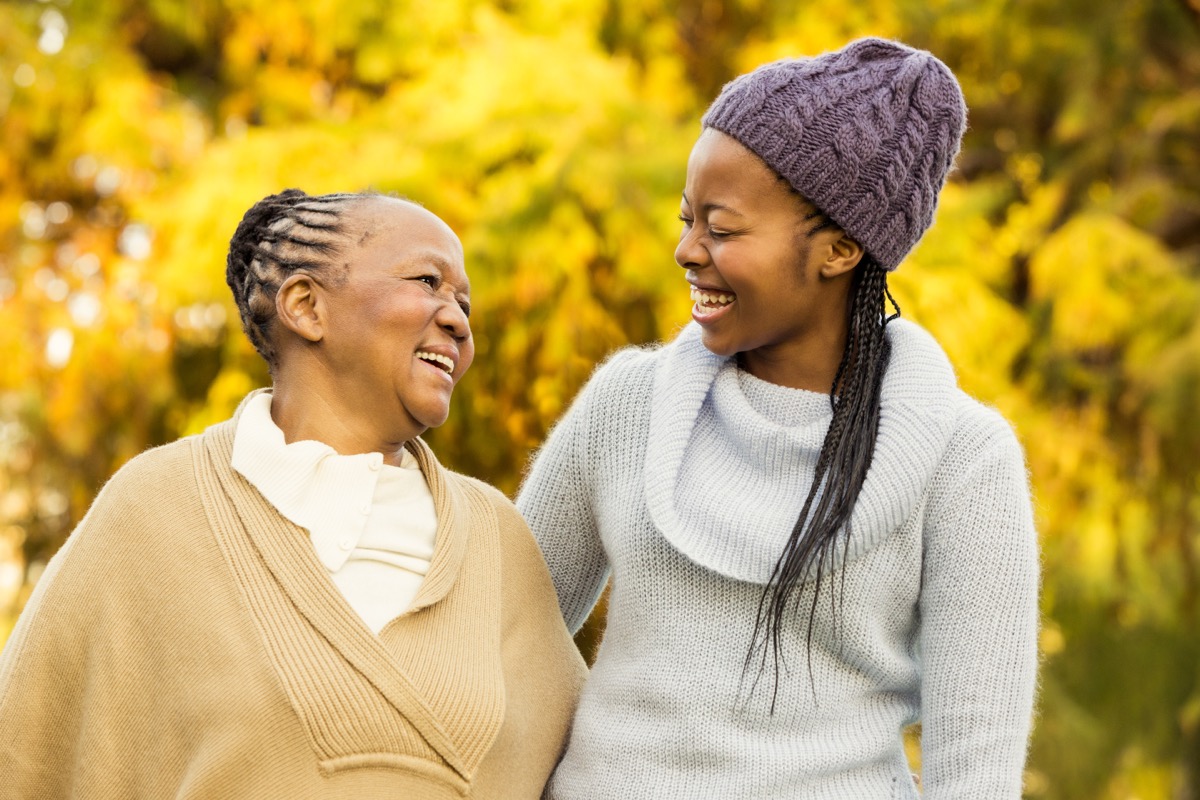Ask a Doctor: Why Do My Joints Hurt When It Rains?

If you ever find that your joint pain gets worse when the seasons change, you're not alone. A 2019 study published in NPJ Digital Medicine reviewed data from 2,658 adults over a 15-month period found that most of the study subjects believed that there was a correlation between the weather and their chronic pain—and experts say they're not wrong.
Read on to discover why a rainy day could be causing your joint pain—and what to do about it. And for more ways to improve your overall health, check out the 3 Major Secrets to Living to 99, According to Betty White.
Changes in barometric pressure can make joint pain worse.

That approaching storm and your increasing joint pain may, in fact, be connected.
"When there is a storm, there is a drop in barometric pressure. When the pressure outside your body drops, the tissues inside your body expand," explains Leann Poston, MD, MBA, MEd, medical advisor for Impakt Fitness. "Swollen tendons and muscles press on the surrounding nerves. There is only so much space inside a joint cavity. Repeated episodes of expansion and contraction of sensitive tissue can irritate your nerves and cause pain."
Related: For the latest healthy living tips delivered to your inbox, sign up for our newsletter!
Humidity may play a similar role.

It's not barometric pressure alone that could be causing your joint pain when a storm approaches, however: the increased humidity in the air may also contribute.
A 2015 study published in the Journal of Rheumatology reviewed data from 810 individuals with rheumatoid arthritis between the ages of 65 and 85. The study's authors found a significant increase in reports of joint pain during periods of increased humidity—especially in conjunction with cold weather.
Cold temperatures may also affect joint pain.

For many people, it's not just rainy weather that affects joint pain: cold can cause a profound increase in pain among susceptible individuals, too.
"Cold temperatures slow blood flow to your extremities to keep your core warm. When muscles and joints get cold, the fluid around the joints and tendons thickens slightly, which makes your muscles and joints feel stiff," explains Poston.
Related: The 40 Best Foods That Fight Arthritis
Staying warm may help.

While there's little you can do to control the weather, there are a number of things you can do to help limit your joint pain when it's cold or rainy outside.
"Keep your muscles and joints warm and supple by wearing multiple layers when it's cold outside, stay active by doing both aerobic exercises and stretches, and stay hydrated," suggests Poston. For some great workout ideas, check out This 20-Minute Walking Workout to Get Fit and Burn Fat, Says Trainer.
Read this next:








